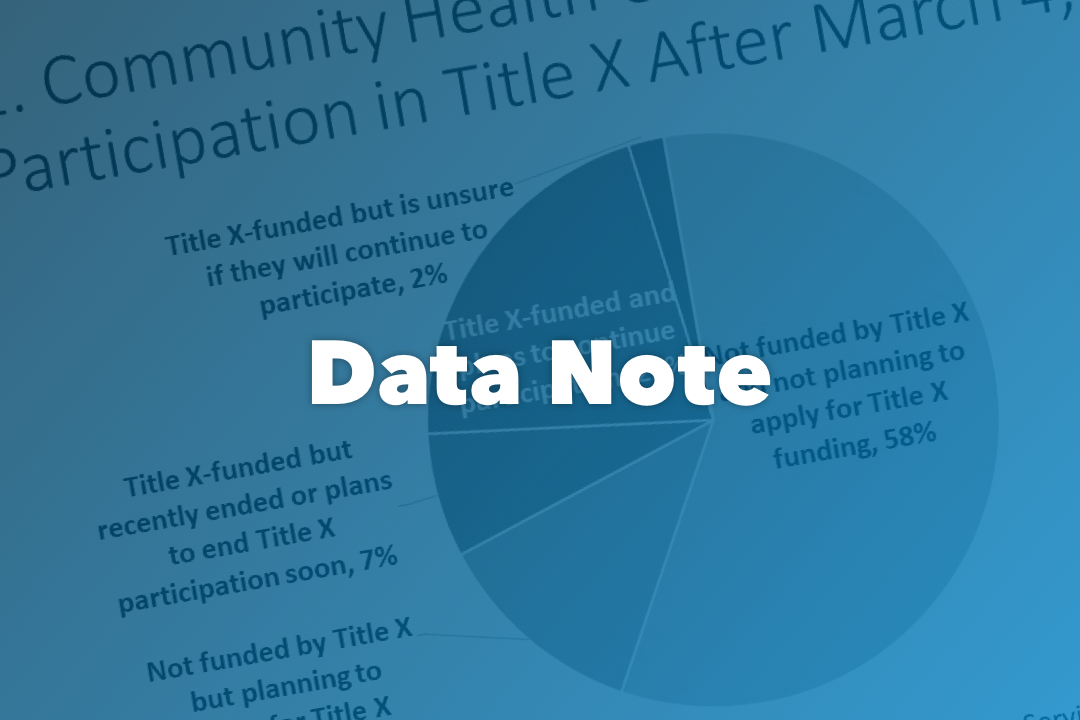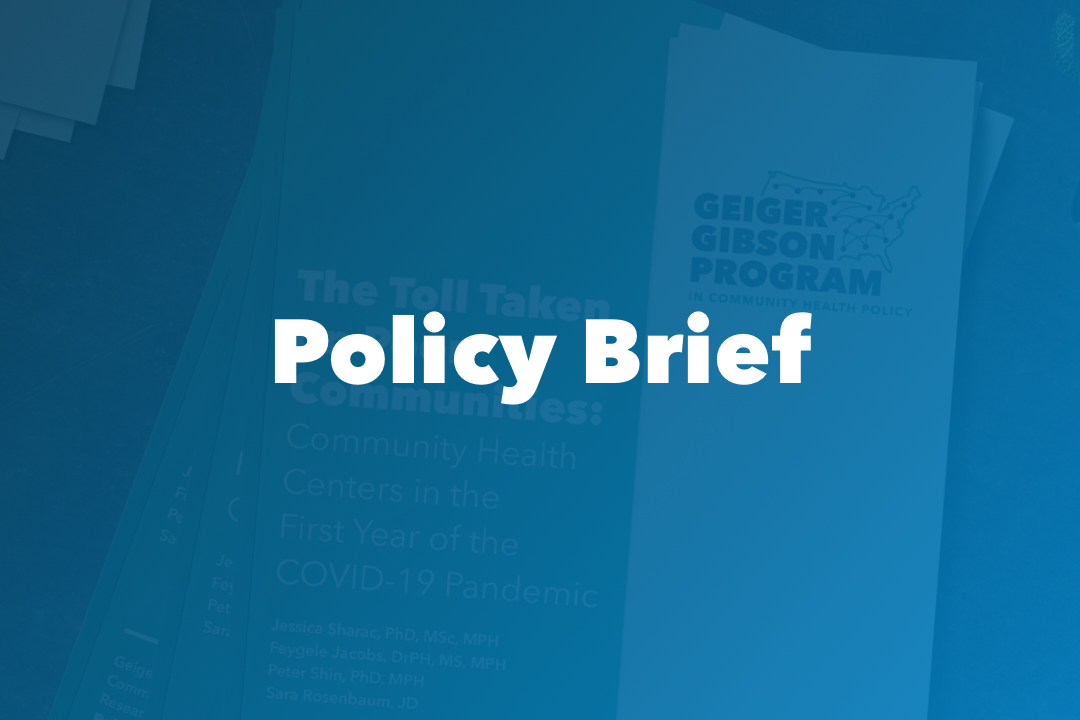Data Note
September 2023
Sara Rosenbaum, Caitlin Murphy
Background
Braidwood Management v Becerra1, pending before the United States Court of Appeals for the Fifth Circuit, challenges the legality of the Affordable Care Act’s (ACA) free preventive benefit guarantee. This guarantee encompasses hundreds of separate services spanning four major categories:2
- evidence-based care for children recommended by the Health Resources and Services Administration (HRSA);
- evidence-based services to promote women’s health recommended by HRSA;
- immunizations against vaccine-preventable diseases recommended by the Advisory Committee on Immunization Practice (ACIP); and
- preventive services with an A or B rating recommended by the U.S. Preventive Services Task Force (USPSTF).
The Braidwood plaintiffs (several companies and individuals) have demanded not only to have the option to buy insurance plans that exclude coverage of services to which they object (e.g., PrEP to prevent the spread of HIV and several other preventive services out of the hundreds covered), but to end coverage for all Americans.
More than 150 million people enrolled in non-grandfathered private insurance and employer group plans and approximately 20 million insured through the ACA’s low-income adult Medicaid expansion are covered by the guarantee.3 As a result, the loss of coverage would be enormous.
Should the challengers prevail, the free coverage guarantee would be lost. Insurers could continue to offer free preventive care at their option, but experts have concluded that this would be unlikely4 because of industry concerns about attracting sicker consumers with higher health needs, a problem known as adverse selection.
A recent analysis5 examined the massive implications of Braidwood on preventive care for women, infants, and children, finding that three-quarters of all covered preventive benefits could be eliminated for the maternal and child health population. This analysis presents information on the actual use of the maternal and child health (MCH) services whose future is at issue in Braidwood.
Source of Data
The MCH service utilization data presented here are maintained by FAIRHealth, an independent nonprofit organization that collects and manages health care claims generated by private health insurers and employer plans. The FAIRHealth database is the nation’s largest database of private insurance claims.
For this analysis, FAIRHealth staff analyzed de-identified patient data from its FH NPIC® (National Private Insurance Claims) database, which includes healthcare claims from more than 70 national and regional health insurers and third-party administrators. The claims analyzed are for services furnished to patients across a range of health plan types: individual policies; small and large insured groups; and self-insured employer-sponsored plans.6
Researchers at The Geiger Gibson Program in Community Health at The George Washington University selected twelve MCH services for analysis whose future coverage is implicated by Braidwood. These procedures were selected because of their especially high importance (both clinically and in terms of population health) to reproductive age women, infants, and children, and because they are associated with clear billable codes for the service, such as CPT or ICD-10 codes, and therefore can be easily identified in claims data.
Two types of analyses were conducted. The first analysis provides a point-in-time snapshot of preventive care use in 2022, based on all relevant claims data for that year. In 2022, this database consisted of approximately 2.8 billion claim lines for services.
The second analysis used a longitudinal database covering the 2018-2022 period: this database follows patient service use over this period and includes 1.2 billion claim lines in 2018 and 2.4 billion claim lines in 2022. (The 2022 longitudinal data is a subset of the larger 2022 database.) This period was selected because the 2018 baseline year predates the onset of the COVID-19 pandemic emergency, and it concludes in 2002 when the pandemic emergency period was beginning to wind down and use of health care was returning to pre-pandemic levels. (It is likely, however, that 2022 use rates continued to be somewhat lower than what otherwise might have been observed under non-pandemic conditions, since preventive care for key population groups, such as children, was slower to recover to pre-pandemic levels).7
Pregnancy-related care is presented only in the longitudinal data set, since pregnancy care happens periodically and must be tracked over time. In order to capture pregnancy care, analysts made certain assumptions: the date on which a delivery was billed was assumed to be the date of birth, and pregnancies were assumed to last exactly 40 weeks. Thus, the pregnancy care utilization results represent only an approximation of pregnancy care.
Point-in-Time Use (2022)
Table 1 shows the volume of use of key MCH services in 2022. Within the FAIRHealth database, over 4.6 million women received contraception services that year, while well-woman visits surpassed 3.2 million. Nearly 4 million children and adolescents were screened for psychosocial conditions, and hundreds of thousands of infants and young children received fluoride varnish. Hepatitis C screening among women of childbearing age exceeded 2.3 million, and over 300,000 pregnancy diabetes screenings occurred while nearly 50,000 occurred postpartum. More than 195,000 women were tested and counseled for the BRCA gene.
Longitudinal use data (2018-2022)
The longitudinal database shows major increases in the use of high-value preventive care related to women’s health, maternal health, preventive reproductive health, and infant, child, and adolescent health – indeed, in a number of cases, the increase in use is dramatic.
From 2018-2022, screening for Hepatitis C - a recommended service for all pregnant women during pregnancy - more than doubled. Risk assessments for the BRCA-related cancer gene, perinatal depression screening, and psychosocial/behavioral health screening in children and adolescents nearly doubled. Use of well-woman visits rose nearly 40%, newborn screening increased by 47%, and preventive dental care in infants and young children rose by nearly 60%. Gestational diabetes screening, as well as postpartum screening, also rose.
This analysis of private insurance claims data from FAIRHealth confirms the importance of the ACA preventive benefit guarantee. Millions of people use these benefits in any given year, and over time, use rates have grown, in some cases dramatically. These numbers would have been even higher had FAIRHealth had access to Medicaid claims data from managed care plans. Strikingly, the growth in utilization is population-wide, not only for adults but also for children, especially where children’s mental health is concerned. The growth in use of preventive pediatric care is especially notable, given the toll taken on children’s mental health by the pandemic and the need for effective health interventions as the nation begins to recover from the pandemic’s terrible emotional toll. Should the Fifth Circuit overturn the preventive benefit guarantee for all Americans, the impact on public health would be vast.
- 1O'Neill Institute (2023). Braidwood Management, Inc. et al. v. Xavier Becerra et al. https://litigationtracker.law.georgetown.edu/litigation/braidwood-management-inc-et-al-v-xavier-becerra-et-al-2/
- 2KFF (2023) Preventive Services Covered by Private Health Plans under the Affordable Care Act. https://www.kff.org/womens-health-policy/fact-sheet/preventive-services-covered-by-private-health-plans/
- 3ASPE (2022). Access to Preventive Services without Cost-Sharing: Evidence from the Affordable Care Act https://aspe.hhs.gov/sites/default/files/documents/786fa55a84e7e3833961933124d70dd2/preventive-services-ib-2022.pdf
- 4BRIEF OF 49 BIPARTISAN ECONOMIC AND OTHER SOCIAL SCIENCE SCHOLARS IN SUPPORT OF DEFENDANTS-APPELLANTS. Braidwood Management V. Becerra. (5nd Cir. 2023) (No. 23-10326) https://litigationtracker.law.georgetown.edu/wp-content/uploads/2023/04/Braidwood_20230627_AMICUS-BRIEF-Bipartisan-Economic-Scholars.pdf
- 5Murphy, C., et al. (2023). 71. Braidwood Management v Becerra Could Eliminate Three Quarters of the Affordable Care Act’s Preventive Benefits for Women, Infants, and Children. https://geigergibson.publichealth.gwu.edu/71-braidwood-management-v-becerra-could-eliminate-three-quarters-affordable-care-acts-preventive
- 6The FAIRHealth database includes claims submitted by grandfathered policies and plans. Therefore, some of the data included here could be attributable to grandfathered benefits, where coverage of free preventive care is optional, not required. In 2019, 13 percent of Americans were insured through a grandfathered plan. (see https://www.kff.org/womens-health-policy/fact-sheet/preventive-services-covered-by-private-health-plans/) The number offering free preventive health coverage for women, infants and children is not known, but is likely to be extremely small given insurers’ adverse selection concerns and the cost of free coverage, which would entail not only the preventive procedure itself but also medically indicated and covered follow-up care. Indeed, the Braidwood challengers allege that a primary reason for their challenge is to be able to secure lower-cost coverage, since they assume that preventive care no longer would be included.
- 7Hunter, E. (July 14, 2023). Missed or Delayed Pediatric Preventative Care During COVID-19 Pandemic Influenced By Race, Enabling Factors, Pharmacy Times. https://www.pharmacytimes.com/view/missed-or-delayed-pediatric-preventative-care-during-covid-19-pandemic-influenced-by-race-enabling-factors




